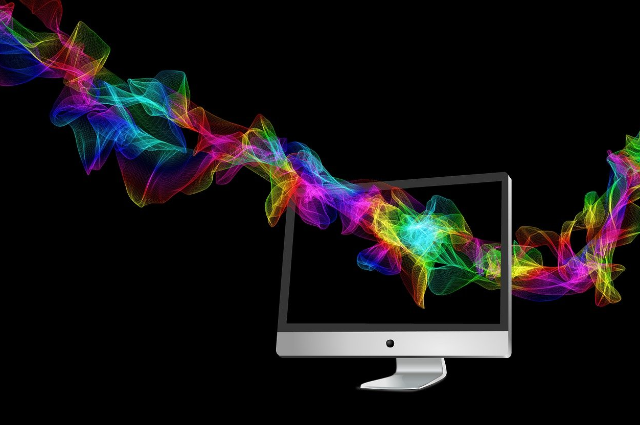
Image by Gerd Altmann from Pixabay
Every day, I get to hear phrases like cutting-edge tech, modern tech, revolutionary things, and the latest innovations. Yes, we are indeed in the future, but there's much more to uncover.
I tried to emphasize my mixed opinion when it comes to technology while keeping the balance between pessimism and optimism.
Technology has and can continue to transform our lives, which I believe to be the very essence of why technology was invented in the first place. It all starts with truly getting to know the technology itself!
Join me on this journey. I hope you’ll have something insightful to take away.
Despite trying to keep the article as short as possible, it grew in length. So I decided to make an index for you to use to help you navigate.
- (Re-)defining Technology
- Beyond IT: The Diverse World of Technology
- IT: A Peek Behind the Curtain
- Tech, Capitalism, & Us
- Evolution & Trends
- Education & Career
- Moral Responsibility
- Conclusion
Let's dive in. So, Technology...Really?
(Re-)defining Technology
It's essential to consider how we define technology, as our thoughts and words influence our actions. We can embrace both optimism and pessimism in technological advancements, focusing on our thoughts, words, assumptions, biases, perspectives, and moral judgments rather than categorizing things right and wrong. It's like blaming fire—it can either cook food or destroy us. It's about how we use it.
Serial entrepreneur and technologist Peter Thiel describes tech as:
“Properly understood, any new and better way of doing things is technology.”
Think of a book—a piece of technology that transports us to different worlds and serves as a time machine, allowing us to explore within its pages. Similarly, the wheel, one of the most fundamental inventions, acts as technology by simplifying the task of moving heavy objects with ease. A well or canal serves as a technology for extracting water to meet our needs. Consider vehicles, they enable us to travel great distances swiftly and safely.
These everyday examples illustrate the essence of technology and how it enhances our lives in terms of efficiency and convenience. Now let’s delve into the focus of this post—how we perceive technology specifically in the context of computers and the internet.
A computer, at its core, is computing technology—it's no more and no less.
It’s designed to process information using only two digits: 0 and 1, 'on' or 'off'. How? Let’s see.
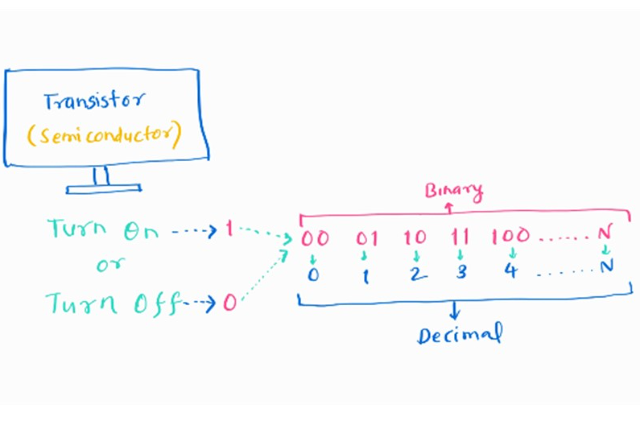
Computers are made up of transistors can act as both conductors and insulators. We can manipulate them by applying small voltage through a capacitor, allowing us to turn the semiconductor 'on' or 'off.' This ingenious mechanism enables computers to interpret and process the language of zeros and ones. It's a binary world where everything is either 'light' or 'dark,' 'true' or 'false,' 'positive' or 'negative.’
Now, you might wonder how we can achieve anything meaningful with just two signals—yes or no, on or off. The answer lies in the fact that we, humans, collectively developed this binary system to represent virtually anything in the real world, spanning from text and audio to images and videos.
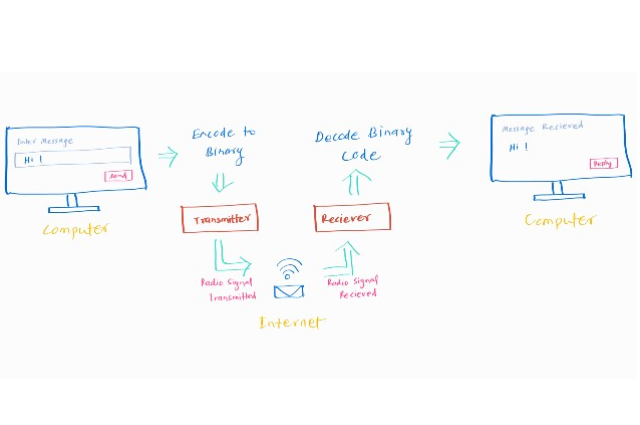
Let's delve a bit deeper. We use '0' and '1' to represent the ‘off’ and ‘on’ states of a transistor, respectively. By combining these '0's and '1's in various sequences, like '00,' '01,' '10,' '11,' '100,' and so on, we create what's known as 'bits,' a term derived from 'binary digits.' These abstract binary combinations serve as the foundation for representing real-world entities.
For instance, '00' denotes '0' in the decimal system, '01' represents '1,' and '10' signifies '2.' In this manner, we extended binary code to cover letters, numbers, special characters and so much more that we can see on our screens.
This binary mechanism enables us to convert sound input into audio, visual into images, handwritten text into digital text, and nearly everything you can imagine, except for smell (who knows, that might be a possibility in the future).
As an example, I’ll send you a message “Hi!”.
The binary code for 'Hi!' is '01001000 01101001 00100001.' But this is stored in my phone or computer and now, I wish to share these codes with you, and that's when the internet comes into play.
The internet, essentially, is a communication technology—it's no more and no less.
When I hit send on “Hi!”, my phone has a transmitter which transmits an electromagnetic radio wave carrying this binary code as a signal through an Internet Service Provider (ISP) like Wi-Fi or a telecommunications company.
Once transmitted, your device will receive this radio wave, which is the signal in binary code. It then decodes this binary data back into the original message, which, in this case, was 'Hi!'
This simple example provides a high-level overview of how computers and the internet function. I understand this section might have felt somewhat weighty, but it's essential to grasp the core principles underlying these technologies.
Beyond IT: The Diverse World of Technology
The power of two essential technologies, the computer and the internet, combine to help us develop real-world applications that address multifaceted challenges.
What we've created is nothing short of remarkable. Though we discovered mathematics and are pretty good at it, we needed something like computers that can perform complex calculations more efficiently than we do. We needed the Internet to communicate over long distances. because it takes more time to travel alone to communicate. So, the internet is making it easy & efficient.
It wouldn't be fair to directly compare humans and computers because each has its unique strengths that make them excel in their own ways.
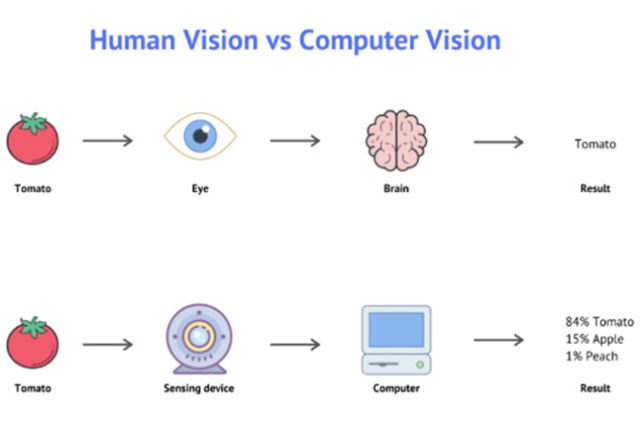
Computer Vision by HQSoftware
For instance, how easy is it for you to spot a cat in a picture? Computers find it much trickier because they see pictures like puzzles, and it takes them longer to figure out if it's a cat or something else.
Computers and humans share a blend of strengths and weaknesses, with tools designed to address these limitations, allowing humans to harness their creativity, emotions, intuitive thinking, and reasoning.
Computers and the internet have evolved rapidly from motors to transistors and optical fibers, resulting in a remarkably swift internet.
In the previous section, we saw what we are seeing now is Information technology and its importance. Yes, IT has become the backbone of everything. But IT isn’t everything.
I’ll be constantly emphasizing that technology shouldn't only be associated with computers. It's far more than that.
There are Various kinds of technology embedded in various kinds of fields, although it often doesn't receive as much attention on social media as computer and internet technologies do.
Mechanical, Chemical, Medical, Agricultural, Food, Environmental, Aerospace, Automotive, Educational, Entertainment, Construction, Financial, Industrial and much more to name a few.
Technology has done amazing things in many areas. It helps make things, like automobiles and medicine, and it's also great for farming and protecting the environment. Technology helps us learn better, makes our entertainment fun, and lets us talk to people far away. It's important for building things safely and managing money. It even helps us explore space and makes transportation better. Technology helps us do things faster and easier in different parts of life, shaping the world we live in.
What holds true is that information technology has become the cornerstone of virtually any discipline or field, primarily because information is everywhere. The constant need to access and handle information has led information technology to almost transform every physical entity into a sequence of 0s and 1s.
IT: A Peek Behind the Curtain
What spreads in the media doesn't always reflect reality. Some things might be true, but not everything.
Peter Phillips author of the book Giants: The Global Power Elite expresses that
“Government departments, corporations, and the media work together to shape the news and control the information we receive. Large corporations invest in both government departments and media outlets to produce biased news content. Public relations firms play a significant role in shaping news stories, with 80% of television news stories being prepared by these firms. The media is deliberately scripted to deliver certain messages to us.”
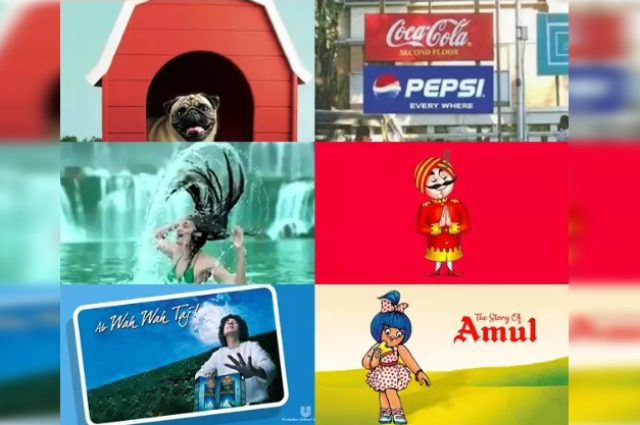
Iconic ads by economic times
You might have noticed Ten years back, TV advertisements were mostly about cars, oils, consumer goods products, and other industrial-related products and services. But today, we see ads for apps and the gadgets to run them – phones, tablets, and more. So-called Tech YouTube channels, primarily reviewing mobile gadgets, are being paid for advertising to maximize positive coverage and minimize negativity, influencing consumer perception and sales.
Media and consumerism often mirror our society.
The smartphone industry is worth trillions, with over a billion subscribers and growing penetration, making it the fastest-growing mobile internet market, according to Statista.
Smartphones, tablets, computers, and laptops reflect our world and society, with app downloads increasing globally and daily internet usage in the Asia-Pacific region reaching 3 hours and 13 minutes as of Q3 2022.
Why do companies release brand-new devices every year? Derek Mueller, in one of his videos, explores the history of planned obsolescence in consumer products.
General Motors and Apple have both adopted obsolescent strategies, releasing new models with minor improvements and different styles annually, inspired by fashion industry tactics.
It reveals how manufacturers intentionally shortened the lifespan of products to boost sales and profits.
To provide some perspective, our phones today are ten times more powerful than the computer that was used during the first moon landing. Just imagine the potential of the device you hold in your hand, on your desk, or in your lap. Are we making the best use of this incredible technology?
Today, anyone who can use digital and smart devices like computers and smartphones is considered smart. However, they might not be aware that these devices and software are intentionally designed to be user-friendly and provide the best user experience. This keeps users scrolling their feeds, creating digital currency to make spending their hard-earned money less painful.
Many popular apps, like delivery apps, are not fully utilizing technology's potential. They are essentially glorified messaging apps programmed in a way that enables us to order various products and services. While we hear about one-day speed deliveries or 15-30-minute instant deliveries, what's happening behind the scenes is quite different.
After an order is confirmed, everything is managed manually by humans. A delivery person takes the parcel and delivers it using a vehicle. Even for super-fast deliveries, there are no drones, quicker supply chains, or advanced logistics; it's the same delivery person racing their vehicle, often putting themselves and others at risk. They work tirelessly in all kinds of weather conditions.
The movie Zwigato how technology has made it easier for people to order food but at the same time the delivery rider needs to navigate through traffic and deal with impatient customers and unforgiving algorithms used by Zwigato.
Is the best use of technology? If we can provide instant deliveries, why not do the same for medicines? The suffering and risk are at least being used where they are truly needed.
What much of today's technology is serving—an age of stimulation and simulations designed to immerse us in digital realms through the screens we carry at our fingertips.
These digital experiences constantly bombard us with information, just like a never-ending stream of messages. Even the gentle vibrations from our gadgets can pull our attention towards the screen.
As Shoshana Zuboff, a professor at Harvard Business School, says:
“If you’re not paying for the product, then you are the product. Social media isn’t free even when it looks like it is. We are trading time for money. The more time we spend on it and the more information we share, the more data they create and make money. It’s a Faustian bargain.
Despite technology, we often feel a disconnection in an age when we should be more connected.
Cars, which were created to save time and make journeys safer, have paradoxically led to increased time spent on the road and more accidents.
The tech apps often lack true innovation, with them being minor extensions of existing systems.
For instance, billion-dollar EdTech platforms sometimes merely digitize traditional classroom teaching, missing out on opportunities for real innovation. The same can be said for FinTech and various other applications. I don't mean to take basic technology for granted. Instead, requesting to adopt a mindset that encourages the effective utilization of all available resources to uncover the full potential of what's truly possible.
Tech, Capitalism, & Us
In today's digital landscape, we observe a continually expanding market of software products and applications primarily designed for profit rather than addressing real-world problems. These apps often rely on extensive user research that exploits human vulnerabilities.
For instance, gambling apps promise quick riches, while numerous social apps compete for our attention and data, not to enrich our lives but to satisfy data-hungry algorithms. We also encounter mindless mobile games filled with in-app purchases and advertisements, along with entertainment apps simulating mundane activities like virtual bubble wrap popping.
All this noise often drowns out the potential for technology to be utilized in ways that genuinely tackle pressing global challenges, from climate change to healthcare.
What is capitalism in essence?
Companies invest heavily in each other, with a singular focus on maximizing return on investment. Their concentrated wealth revolves around acquiring emerging businesses and growing further.
Capitalism plays a massive role in the tech industry, with capitalists constantly seeking to invest in growing businesses. Startups and tech organizations require capital to sustain their growth, and capitalists provide the fuel they need in return for substantial profits.
A win-win for those elite is loss for the rest of us.
As we've heard many times, the rich get richer, one possible reason can be capitalism. These tech companies are so deeply interconnected that they sometimes overlook or ignore potential issues due to their heavy investments. However, it's important to note that not all businesses are environmentally friendly, highlighting some of the negative aspects of capitalism. Many capitalists prioritize short-term gains over long-term adverse effects on the environment.
If you'd bet ₹85,000 on Google stock back in 2004, your investment would have ballooned to a whopping ₹10,25,000! A similar story goes for Facebook, since the time of its IPO, your investment would have a total return of around 400%.
Google and Facebook generate a significant portion of their revenue through advertising, which has limited connections to the technology sector.
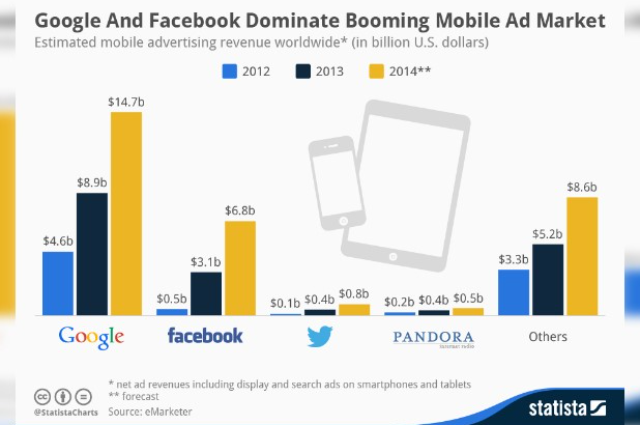
The tech industry's substantial growth and market dominance are visible. Yet, if we look closer, we realize that Google and Facebook, despite their technological roots, primarily earn revenue from advertising.
Bitcoins gained immense popularity in 2010, but the fame it has achieved bears little resemblance to the actual capabilities of the underlying blockchain technology.
The real tech that will make the world a better place is yet to be capitalized.
These tech companies profit by monetizing your time spent on their platforms. The more time you invest in these apps, the more money they make. Their goal is to keep you engaged on their apps, even if it leads to potential future losses. As a result, our interactions become valuable commodities for profit-driven corporations.
Overall, technology is often underestimated. It is mostly employed to create applications and gadgets that cater to immediate gratification, fleeting whims, and profits, often at the expense of addressing genuine real-world issues or delivering valuable experiences. This emphasis on return on investment can overshadow the potential for technology to make a meaningful difference.
Evolution & Trends
You may find all you need to fulfil your goals on the internet these days.
Despite having access to almost all the books in the world, why do we still fail to use these resources to solve our problems?
This is due to the straightforward idea that anything digital can be copied and shared for very little money, making a vast number of resources always available to everyone for free. This availability devalues these technologies. Therefore, we must carefully consider how we will use them for the benefit of society and ourselves if we are to fully realize their potential.
Throughout the decades, numerous moments have defined the evolution of technology.
Technological advancements are a result of meticulous pre-work and trial-and-error processes, shaping our world through significant milestones and pivotal inventions.
The evolution of technology has been marked by various milestones, from the 1950s with the rotary phone and typewriter to the 1970s with the IBM 5100 and the introduction of the computer mouse. The 1990s saw the founding of Google, YouTube, and the World Wide Web. The 2000s saw the iPhone and iPad, while the 2010s saw wearable tech and cloud computing. Artificial intelligence, 5G connectivity, and virtual reality have all contributed to the modern tech landscape, shaping our future and allowing us to explore new possibilities.
Today, technology is everywhere, and even little kids know about advanced things like ChatGPT. This is because they see lots of advertisements for technology on social networks and media.
But sometimes the social buzz adds dust to the true value of a subject.
It's an interesting paradox that while we tend to appreciate and applaud the arrival of revolutionary tools and technologies, we often don't fully utilize them for our benefit. We're remarkably skilled at losing interest and taking things for granted.
Think about it – when phones were first introduced, the ability to speak to someone miles away through a piece of plastic was nothing short of magic. Similarly, Google was a revolutionary tool that transformed the way we search the web, and it's still our go-to search engine. A similar is true for AI tools.
As time passes, we sometimes forget to marvel at the remarkable capabilities and opportunities these innovations offer.
Not everything about tech is hard. Important technologies are explained in extremely simplistic language which even children can understand. It's not just for experts anymore; it's for everyone.
In the present context, AI resembles a parrot - an impressive mimic that can reproduce information and patterns it has learned. Just as imitating Hemingway's writing style doesn't make someone a true Hemingway, AI's ability to mimic various styles and tasks doesn't equate to genuine understanding or creativity. It excels at replicating patterns and generating content based on what it has seen in its training data.
This analogy emphasizes that we are still in the early stages of AI development. While AI can mimic human actions, it lacks the profound comprehension, emotional depth, and artistic originality that define human thought and creativity. AI's operation is based on data, algorithms, and replication, rather than true understanding or independent thinking.
AI's exceptional capabilities, like parrot mimicry, are limited to recognizing patterns and information, highlighting its vast potential and the potential it holds for the future.
As new technologies like 5G, AI in healthcare, self-driving cars, and automation in manufacturing advance, we are entering a new era full of potential. They can make our lives better, but we should tread carefully, understanding that while they can mimic intelligence, they are not truly intelligent. We have more to discover and achieve in this ever-evolving world of technology.
Education & Career
General Motors CEO Roger Smith shut down Flint factories, leading to a significant reduction in employee numbers from 80,000 in 1978 to around 50,000 in 1992. The main reason is to lower the expenses related to labour.
Stretching to this GM story let’s see what happened in India.
Around 30 years ago, India saw a surge in engineering and IT. India's IT boom in the 1990s and 2000s attracted international companies, leveraging its educated, English-speaking population and lower labour costs. The Indian government invested in robust IT infrastructure, leading to the establishment of numerous engineering colleges and a profitable engineering industry.
So many engineering colleges opened, acting like a factory producing engineers. The relatively young population of India, compared to larger nations, presents a significant advantage.
Besides the high-quality education, renowned universities provide a vast network of alumni, which can be incredibly helpful for finding job opportunities and startup funding. This is especially true in fields like computer science and information technology.
India, the world's fifth-largest economy, has a GDP of $3.73 trillion and five of the top ten IT firms. With 833 million active internet users and the second-largest online market, India's inclusive business growth is fueled by Aadhar, and UPI. With a tech industry talent pool of 3.8 million, India is the world's second-largest English-speaking country.
The previous section discussed the significant role of IT in various industries, emphasizing the importance of computer technology, the Internet, and software solutions. This demand has given rise to a wealth of opportunities and increased employability. The growth of various sectors fuels increased employment in the IT industry.
Despite whatever you hear in the media about the unemployment rate and recessions, the potential to create a future in India is higher than ever.
The IT sector, with its high-paying nature, offers employees a flexible, free work environment, promoting a commendable work-life balance due to its economic significance.
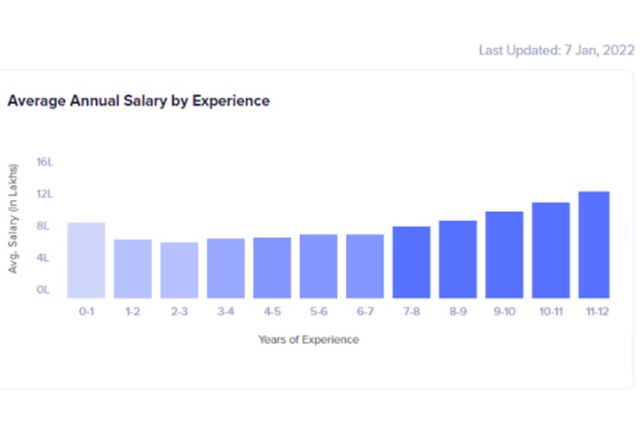
This phenomenon has led to a paradigm shift. Students at a young age are now offered huge sums of salaries in a manner that history has not witnessed before. Consequently, the emphasis has shifted towards gaining admission to prestigious engineering colleges and securing these attractive packages.
However, it's essential to remember that technology and opportunities exist in various fields, not just in information technology. We should remain open to exploring the diverse opportunities that are out there.
"Every other profession is equally important, if not more valuable financially.”
Speaking from my own experience, I initially pursued a science background in junior college, then switched to fine arts for my graduation. Surprisingly, I ended up with a job in design at a tech company. You can see how traditional courses and disciplines are blending into one another and will likely continue to do so.
There are courses apart from engineering that are less competitive and offer promising futures, like Medicine, Business Management, Design and Fine Arts, Chemicals, Psychology, Journalism, Mass Communication and much more. The world of tech-related courses extends into the exciting realm of interdisciplinary vocations, showcasing the age of interdisciplinary courses.
Moral Responsibility
Modern tech companies often prioritize profit over addressing societal issues, a gap that affects everyone, highlighting the need for a more balanced approach to societal impact.
Steve Jobs in one of his interviews says,
“Once you discover one simple fact and that everything around you that you call life was made up by people that were no smarter than you. you'll want to change life and make it better because it's kind of messed up in a lot of ways.”
Recognizing and tackling these social problems is not just a noble endeavour; it's an urgent and vital one. These issues consist of problems from environmental sustainability and healthcare accessibility to poverty alleviation and education enhancement.
In today's world, social entrepreneurs are crucial in creating solutions to urgent problems, not just for financial gain but also to improve the world, despite challenges. It's about making things better for everyone.
Being in the industry for quite a while, I've made an observation. The IT sector carries substantial responsibilities and possesses tremendous potential to fulfil them.
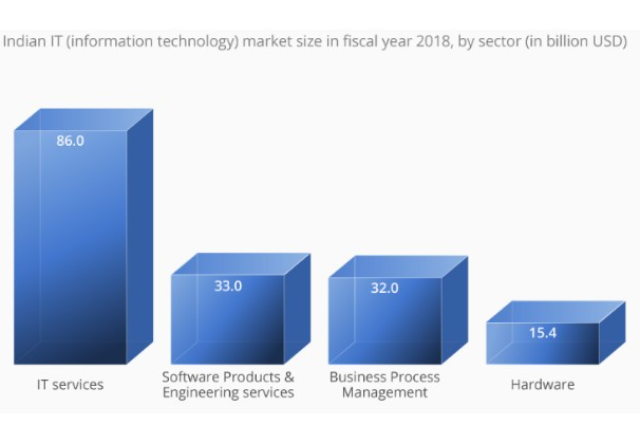
Indian IT by Statista
Indian IT businesses, particularly those that provide services, have become resource companies. They have accumulated a sizable pool of engineers, whom they may draw from any time a client needs help with a project. The immense profits garnered by companies are driving them to expand their workforce, hiring more and more engineers.
Innovation is being done by companies, mostly from outside. I'm just giving you an idea of how things are here, not generalizing about anything in particular.
However, this influx of high-paid jobs sometimes leads to an unintended consequence: engineers find themselves with ample free time, which can hinder their intellectual growth. Instead of being exposed to inspirational opportunities to harness their strengths for the greater good, they often become entangled on the corporate ladder.
What we are seeing is just globalization, more about imitation than innovation.
While India has some remarkable companies like Flipkart and Ola, if we examine their products, they often mirror global ideas. For instance, Flipkart is akin to India's Amazon, Ola emulates India's Uber, and Oyo draws inspiration from Airbnb. There is minimal vertical growth in terms of innovation.
In several cases, educational companies focus more on accumulating capital than on imparting education. Stock apps, similarly, may not effectively serve their intended purpose.
Creating any product is no less than rocket science, so whatever we have achieved must be acknowledged. But we have a long journey ahead, a journey that takes a different route – a more innovative one.
Peter Thiel in Zero to One says,
“Zero to one every moment in business happens only once. The next Bill Gates will not build an operating system. The next Larry Page or Sergey Brin won’t make a search engine. And the next Mark Zuckerberg won’t create a social network. If you are copying these guys, you aren’t learning from them.”
Technology can empower financial literacy, promote transparency, and offer ecological solutions. It can address global challenges like food security, healthcare, clean energy, and urban living. AI can accelerate scientific breakthroughs and space technology.
To reinforce the idea of taking responsibility and contributing positively. Whether as hobbyists or volunteers, things like open-source projects provide a platform for making a meaningful impact.
Furthermore, this commitment to innovation and giving back aligns with the principle of using one's skills and time for the greater good.
The way we use and enjoy technology in comfort is not always the same for everyone. Some have vision problems like colour blindness, low vision or complete blindness, others are unable to hear digital sounds, and those with physical limitations. Cognitive differences also impact how we interact with technology, with some struggling with reading, comprehension, or memory.
Adaptive technologies bridge these gaps, making technology inclusive and accessible for everyone. Acknowledging these differences and embracing adaptive tools can create a more inclusive digital realm.
Technologies play a crucial role in bridging the accessibility gap. Technology must be designed and developed in a way that is accessible to all, regardless of their challenges and limitations.
Software design and development focuses on identifying issues to boost revenue through identifying issues and releasing new features, often requiring innovation. However, what if, we channel some of our time and energy into addressing real-world problems that remain underserved? These may not promise returns on par with the next social media, but they carry a different kind of significance.
By addressing these underserved needs, we can enhance the lives of millions, reminding us of the profound impact technology can have.
Conclusion
Our exploration of the tech landscape offers both a contrarian and optimistic perspective on the vast potential and complex challenges it presents.
Technology is a tool, not a master. Building a healthy relationship with it requires realistic efforts and commitment, leveraging its power for world improvement.
Whether it's reducing carbon emissions, advancing cancer research, or addressing any of humanity's greatest challenges, technology can be a powerful ally.
Steve Jobs once compared computers to bicycles for the human mind, emphasizing their role in amplifying our abilities. With this philosophy in mind, we must not take technology for granted. Instead, we should recognize it as one of humanity's great collaborations, a realm where valuable knowledge is freely shared.
Please let me know what caught your attention the most, and I'll try to put together my thoughts in another post.
Thank you for reading.
. . .
Sources:
- Veritasium. (2019, October 23).
Math’s Fundamental Flaw [Video]. - Peter Phillips discussing his book
“Giants: The Global Power Elite” - Stanford eCorner. (2015, October 20).
Why it’s the best time to start a startup [Video] - Thiel, P., & Masters, B. (2014). Zero to One
- The Social Dilemma. (2020)
- Soch [YouTube Channel]
- ChatGPT and Bing Chat for immense help in research and rephrasing.
- Playground AI art for amazing visuals aligned with the context
